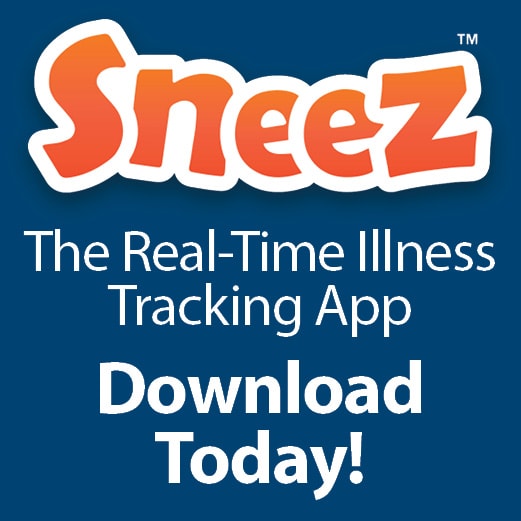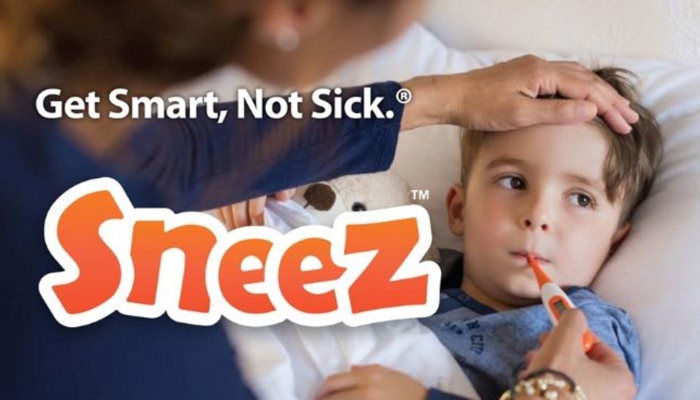By Guest Blogger Dr. Bill Satterwhite
“Is strep throat going around?” “What about mono?” “Are you seeing flu yet?” “ Is there anything else going around that I should be aware of, since I’ve got you on the phone?” These were common early morning questions from parents calling into my pediatric office. The real question: “Is it worth the time and money to bring my child to the doctor?” After all, it might just be a “virus.” Ugh!
A child with a sore throat and fever AND knowledge that Strep was going around meant a (hopefully) quick trip to the doctor, antibiotics and a return to work and school or daycare the next day. A virus, mono, or the flu? Now THAT could totally upend the household for a week or more. So, the simple question of “What’s going around?” was really a loaded question, because the answer helped parents care for their child and plan for the week ahead.
And it is not just parents of small children who want to know what’s going around. Other members of the community, like older adults, premature babies and individuals undergoing chemotherapy, have a significant need to know what the “illness weather” is like outside in order to stay healthy and to avoid hospitalizations.
As a doctor and a dad I knew there must be a better way to keep my patients and families better informed and more healthy. I knew that rumors and misinformation about illnesses led to concern or even panic, as well as unnecessary trips to the doctor’s office, and that accurate information helped parents take smart steps to keep their families well. That’s why I invented the Sneez app –so ALL of us would know what was going around, and we could Get Smart and Not Sick.
You may remember seeing the Sneez app on the news a few years ago or even downloaded and used it yourself. In the beginning, Sneez relied on users to input their symptoms and diagnoses into the app and reported that information by school or extra-curricular activity. That was helpful, but it just didn’t go far enough in achieving our mission of preventing illness and helping our community to stay well. So we talked to our users and our partners at Wake Forest Baptist Health and Brenners Children’s Hospital to explore ways we could make Sneez even better. We then went back to work to design the all new Sneez app with much more illness data from local doctors and many more useful features for parents and caregivers, while retaining the features that parents liked in the original app.
 So how does the new Sneez app work? First we get all the diagnosis data about common illnesses such as flu, strep, mono, “stomach bugs”, the dreaded hand, foot and mouth disease, and even lice, from local doctors’ offices. Then we analyze the data and convert it into heat maps and graphs for each illness so that everyone can see what germs are going around where the sick season is heading. Plus, users can anonymously report certain symptoms for their household, check out short videos that explain symptoms and treatments for common illnesses and connect to telemedicine visits – all right from the app. Sneez can also connect users with a nurse so parents and caregivers can get fast, informed answers to their health and wellness related questions without having to wait for a callback from the doctor’s office.
So how does the new Sneez app work? First we get all the diagnosis data about common illnesses such as flu, strep, mono, “stomach bugs”, the dreaded hand, foot and mouth disease, and even lice, from local doctors’ offices. Then we analyze the data and convert it into heat maps and graphs for each illness so that everyone can see what germs are going around where the sick season is heading. Plus, users can anonymously report certain symptoms for their household, check out short videos that explain symptoms and treatments for common illnesses and connect to telemedicine visits – all right from the app. Sneez can also connect users with a nurse so parents and caregivers can get fast, informed answers to their health and wellness related questions without having to wait for a callback from the doctor’s office.
The Sneez team and its healthcare partners imagine a world in which people don’t get sick because they have the knowledge they need to take actions to stay well, such as avoiding places where sickness is high, washing hands frequently and getting more sleep. Take the first step in creating that world for your family by downloading the free Sneez app today.
Stay well ~ Dr. Bill
*Sponsored by Brenner Children’s
















